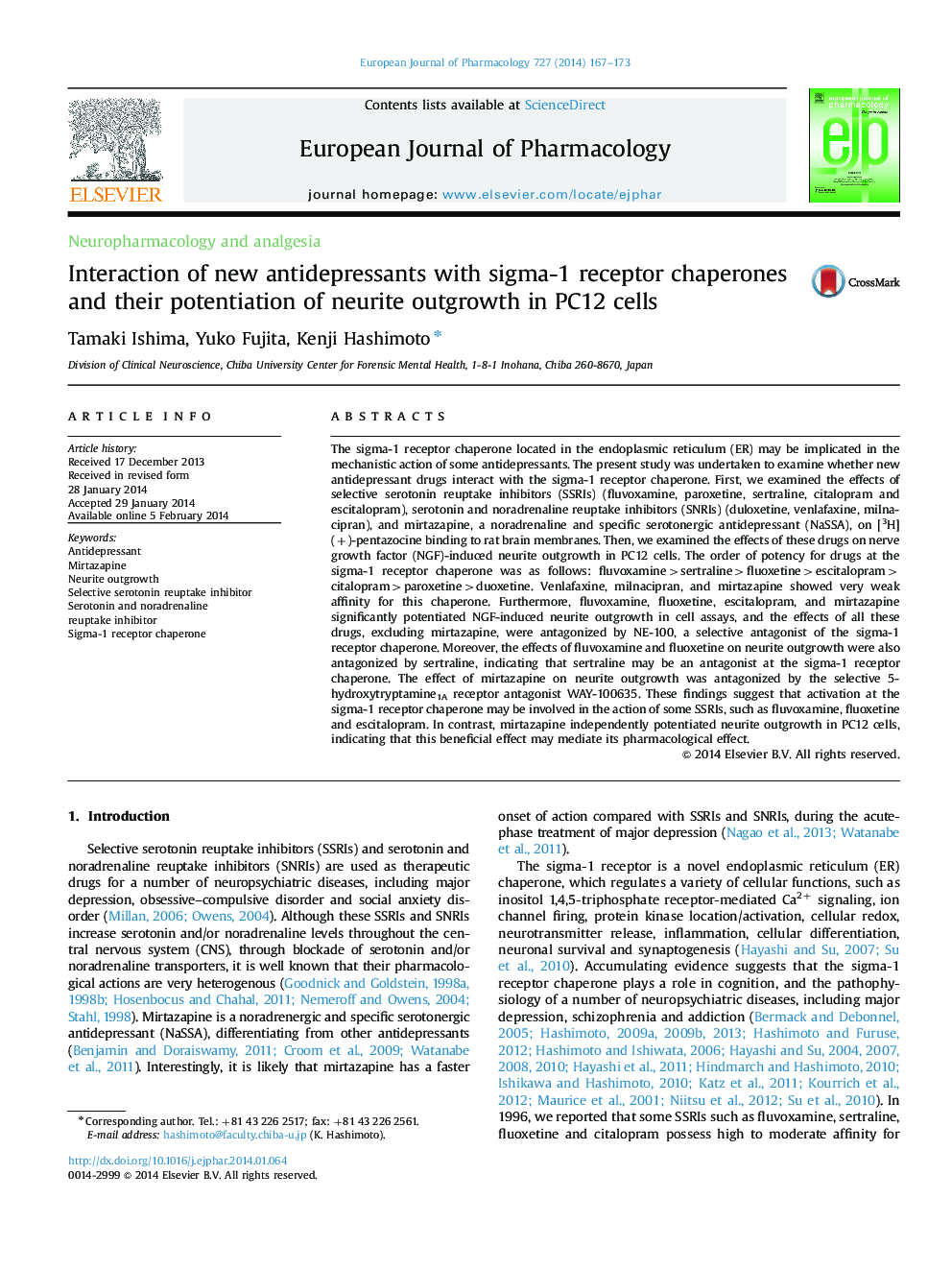| Article ID | Journal | Published Year | Pages | File Type |
|---|---|---|---|---|
| 2531947 | European Journal of Pharmacology | 2014 | 7 Pages |
sThe sigma-1 receptor chaperone located in the endoplasmic reticulum (ER) may be implicated in the mechanistic action of some antidepressants. The present study was undertaken to examine whether new antidepressant drugs interact with the sigma-1 receptor chaperone. First, we examined the effects of selective serotonin reuptake inhibitors (SSRIs) (fluvoxamine, paroxetine, sertraline, citalopram and escitalopram), serotonin and noradrenaline reuptake inhibitors (SNRIs) (duloxetine, venlafaxine, milnacipran), and mirtazapine, a noradrenaline and specific serotonergic antidepressant (NaSSA), on [3H](+)-pentazocine binding to rat brain membranes. Then, we examined the effects of these drugs on nerve growth factor (NGF)-induced neurite outgrowth in PC12 cells. The order of potency for drugs at the sigma-1 receptor chaperone was as follows: fluvoxamine>sertraline>fluoxetine>escitalopram>citalopram>paroxetine>duoxetine. Venlafaxine, milnacipran, and mirtazapine showed very weak affinity for this chaperone. Furthermore, fluvoxamine, fluoxetine, escitalopram, and mirtazapine significantly potentiated NGF-induced neurite outgrowth in cell assays, and the effects of all these drugs, excluding mirtazapine, were antagonized by NE-100, a selective antagonist of the sigma-1 receptor chaperone. Moreover, the effects of fluvoxamine and fluoxetine on neurite outgrowth were also antagonized by sertraline, indicating that sertraline may be an antagonist at the sigma-1 receptor chaperone. The effect of mirtazapine on neurite outgrowth was antagonized by the selective 5-hydroxytryptamine1A receptor antagonist WAY-100635. These findings suggest that activation at the sigma-1 receptor chaperone may be involved in the action of some SSRIs, such as fluvoxamine, fluoxetine and escitalopram. In contrast, mirtazapine independently potentiated neurite outgrowth in PC12 cells, indicating that this beneficial effect may mediate its pharmacological effect.
